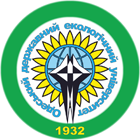Authors: Ivanov S.V., Dranicher O.R.
Year: 2013
Issue: 15
Pages: 79-88
Abstract
The estimate of albedo influence on thermal regime over Odessa is performed by the atmospherical mesoscale model MM5. Two short numerical runs with different albedo values have been tested. The simulated outputs are evaluated for a diurnal cycle of air temperature for the urban and rural area and its differences between two runs.
Tags: thermal regime of the city; urban heat island; альбедо
Bibliography
- Оке Т.Р. Климаты пограничного слоя: Пер. с англ. – Л.: Гидрометеоиздат, 1982. – 360 с.
- Taha H. Urban climates and heat island: albedo, evapotranspiration, and antropogenic heat // Energy and buildings. – 1997. – №26. – P.99-103.
- Мягков М.С. Влияние мегаполиса Москва на величину испарения // Метеорология и гидрология. – 2005. – №3. – С. 78-80.
- Mahura A., Petersen C., Baklanov A., Amstrup B., Korsholm U.S., Sattler K. Verification of long-term DMI–HIRLAM NWP model runs using urbanization and building effect parameterization modules // HIRLAM Newsletter. – 2008. – №53. – P. 50-60.
- Dudhia J. A nonhydrostatic version of the Penn State/NCAR mesoscale model: Validation tests and simulation of an Atlantic cyclone and cold front // Mon.Wea.Rev. 1993. – V.121. – Р.1493-1513.
- Hong S.-Y., Pan H.-L. Nonlocal boundary layer vertical diffusion in a medium-range forecast model // Mon. Wea. Rev. – 1996. – V.124. – Р. 2322-2339.
- Mlawer E. J. Radiative transfer for inhomogeneous atmosphere: RRTM, a validated correlated-k model for the longwave / E. J. Mlawer, S. J. Taubman, P. D. Brown, M. J. Iacono, S. A. Clough // Journal of Geophysical Researches. – 1997. –V. 102. – P. 16663-16682.
- Dudhia J. A multi-layer soil temperature model for MM5. – 1996. – Р.49-50. (Preprints. / The sixth PSU/NCAR Mesoscale Model Users’ Workshop. Boulder, Colorado; 1996-06).
- Grell G.A. Prognostic evaluation of assumptions used by cumulus parametrizations // Mon. Wea. Rev. – 1993. – V.121. – Р. 764-787.
- Uppala S.M., Kållberg P.W., Simmons A.J., Andrae U., da Costa Bechtold V., Fiorino M., Gibson J.K., Haseler J., Hernandez A., Kelly G.A., Li X., Onogi K., Saarinen S., Sokka N., Allan R.P., Andersson E., Arpe K., Balmaseda M.A., Beljaars A.C.M., van de Berg L., Bidlot J., Bormann N., Caires S., Chevallier F., Dethof A., Dragosavac M., Fisher M., Fuentes M., Hagemann S., Hólm E., Hoskins B.J., Isaksen L., Janssen P.A.E.M., Jenne R., McNally A.P., Mahfouf J.-F., Morcrette J.-J., Rayner N.A., Saunders R.W., Simon P., Sterl A., Trenberth K.E., Untch A., Vasiljevic D., Viterbo P., Woollen J. The ERA-40 re-analysis // Q.J.R.Meteorol.Soc. – 2005. – V.131. – Р.2961-3012.
- Маринин И.Л. Енгалычева О.Р. Основные характеристики и пространственное распределение острова тепла г. Одесса // Вісник Одеського державного екологічного університету. –2010. –№10. – С. 135-142.
- Casati, B., Wilson L. J., Stephenson D.B., Nurmi P., Ghelli A., Pocernich M., Damrath U., Ebert E. E., Brown B. G., Mason S. Forecast verification: current status and future directions // Meteorological Applications, Special Issue: Forecast Verification. – 2008. – Vol.15, – Р.3-18.



